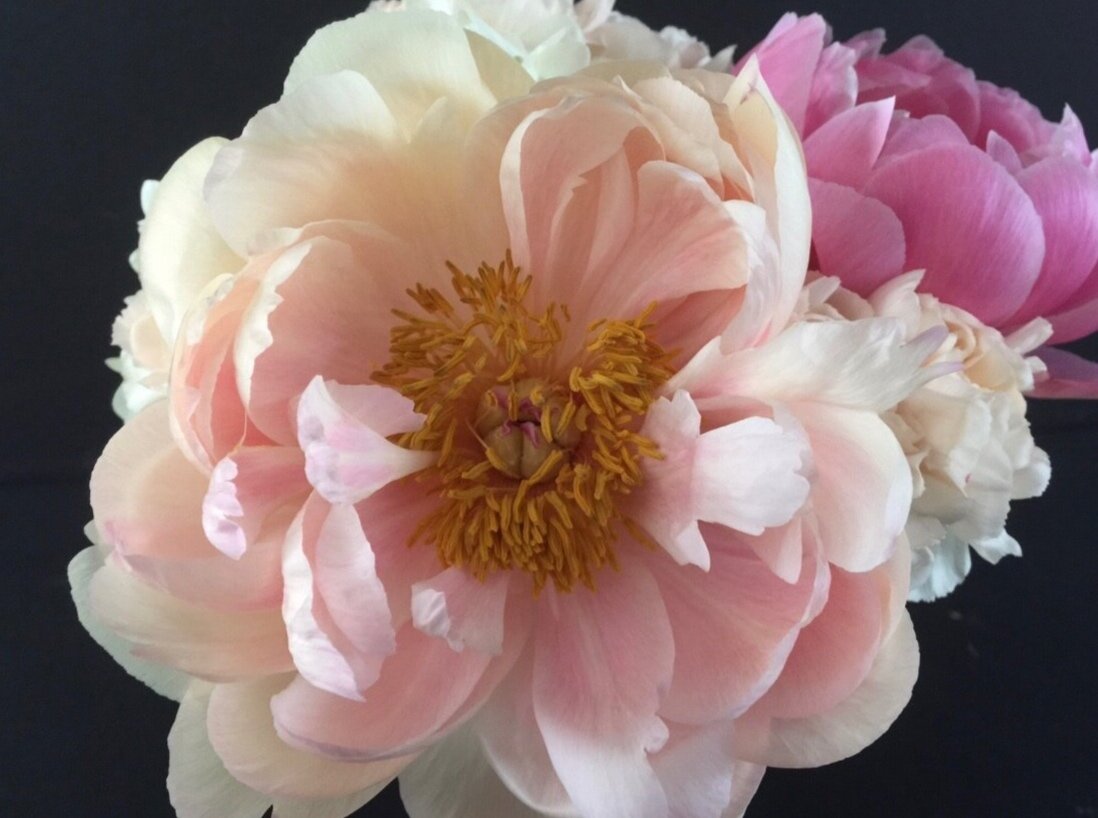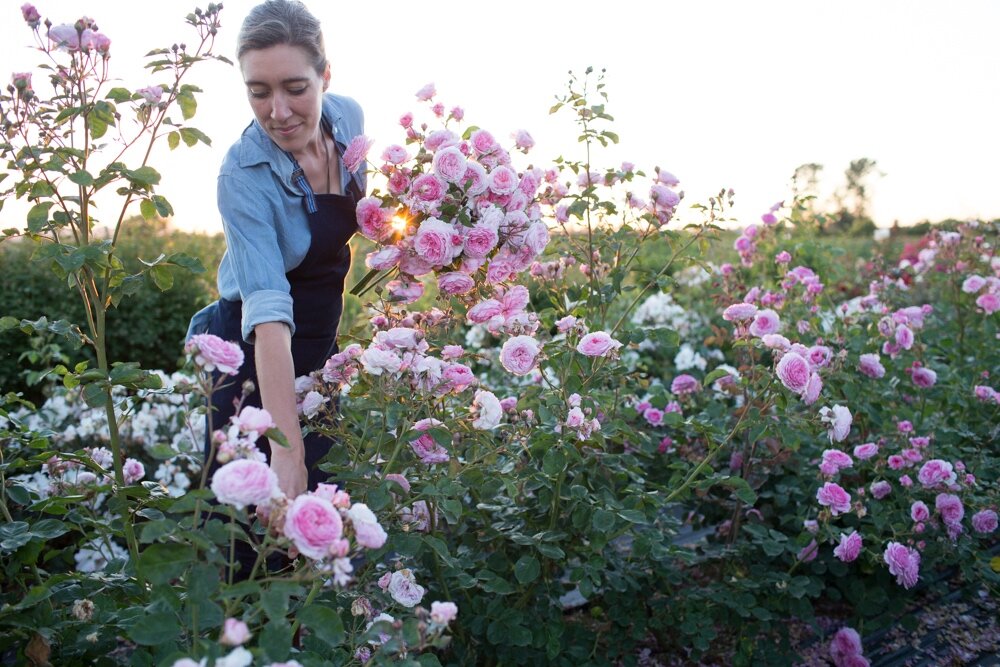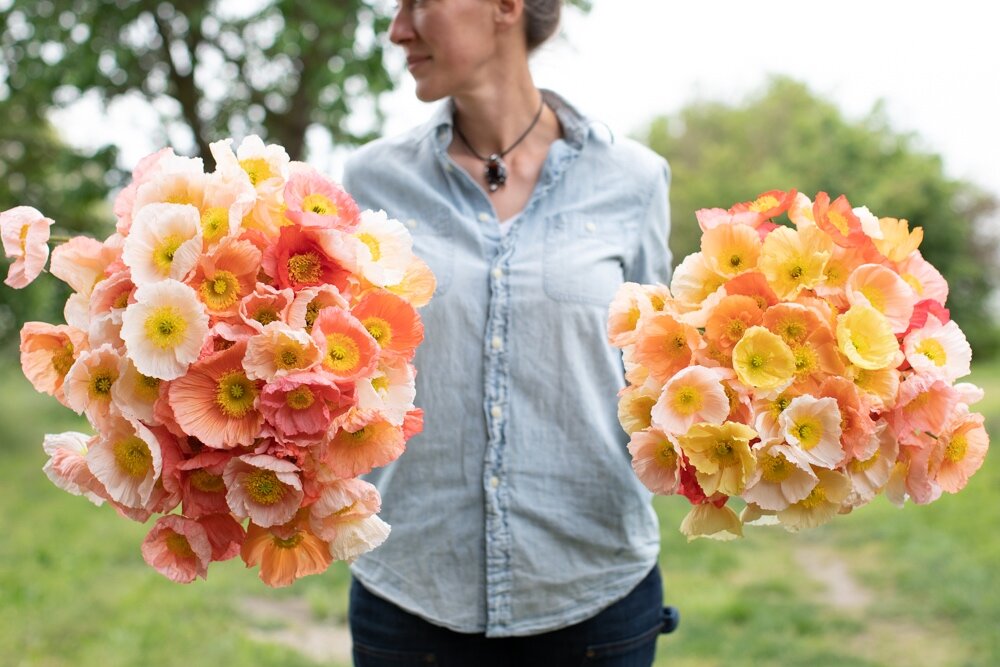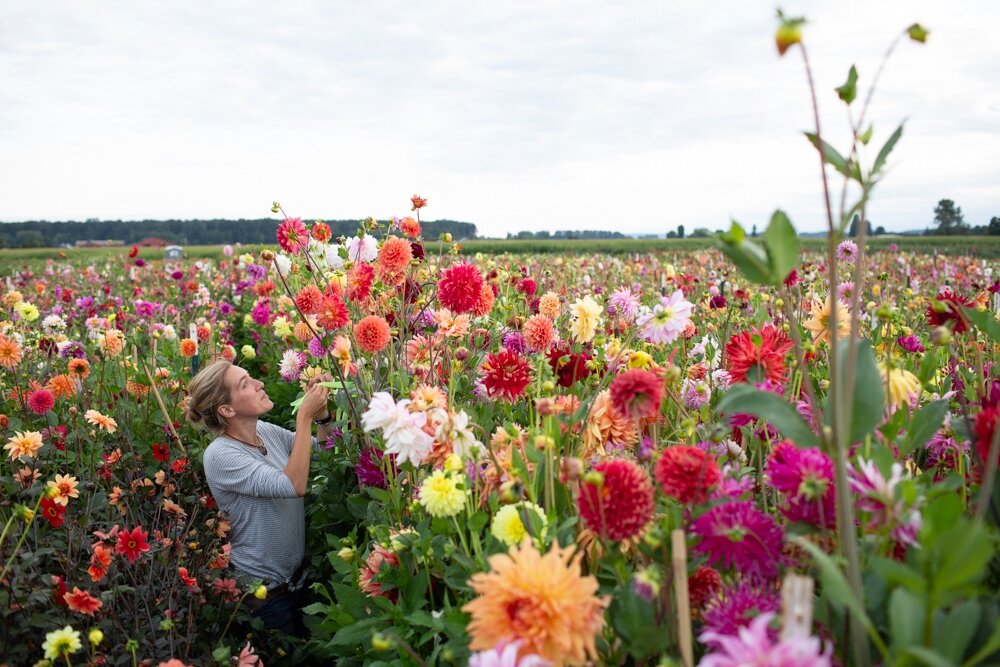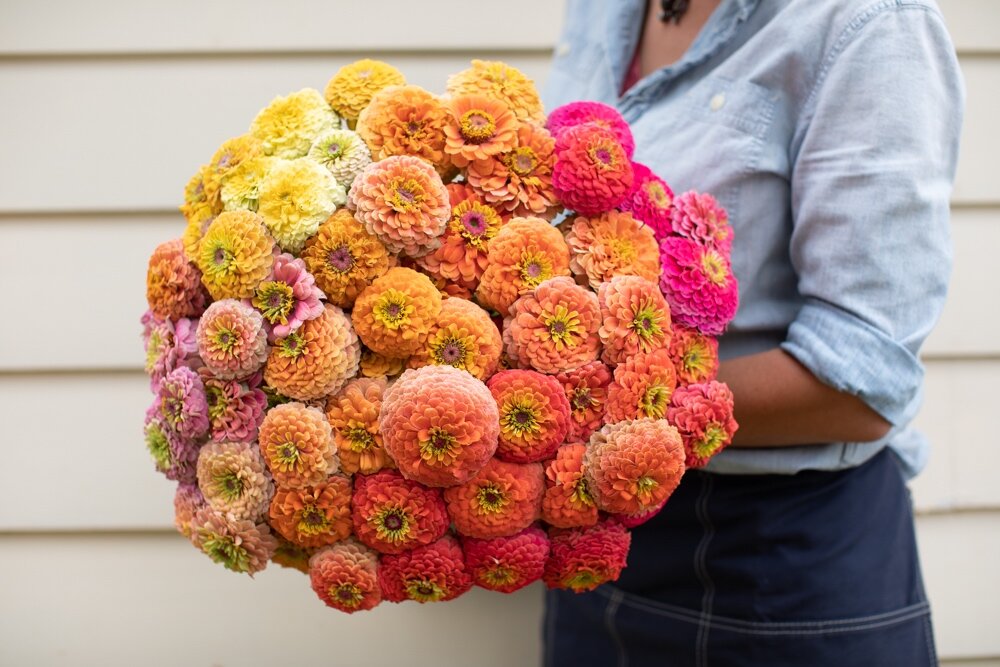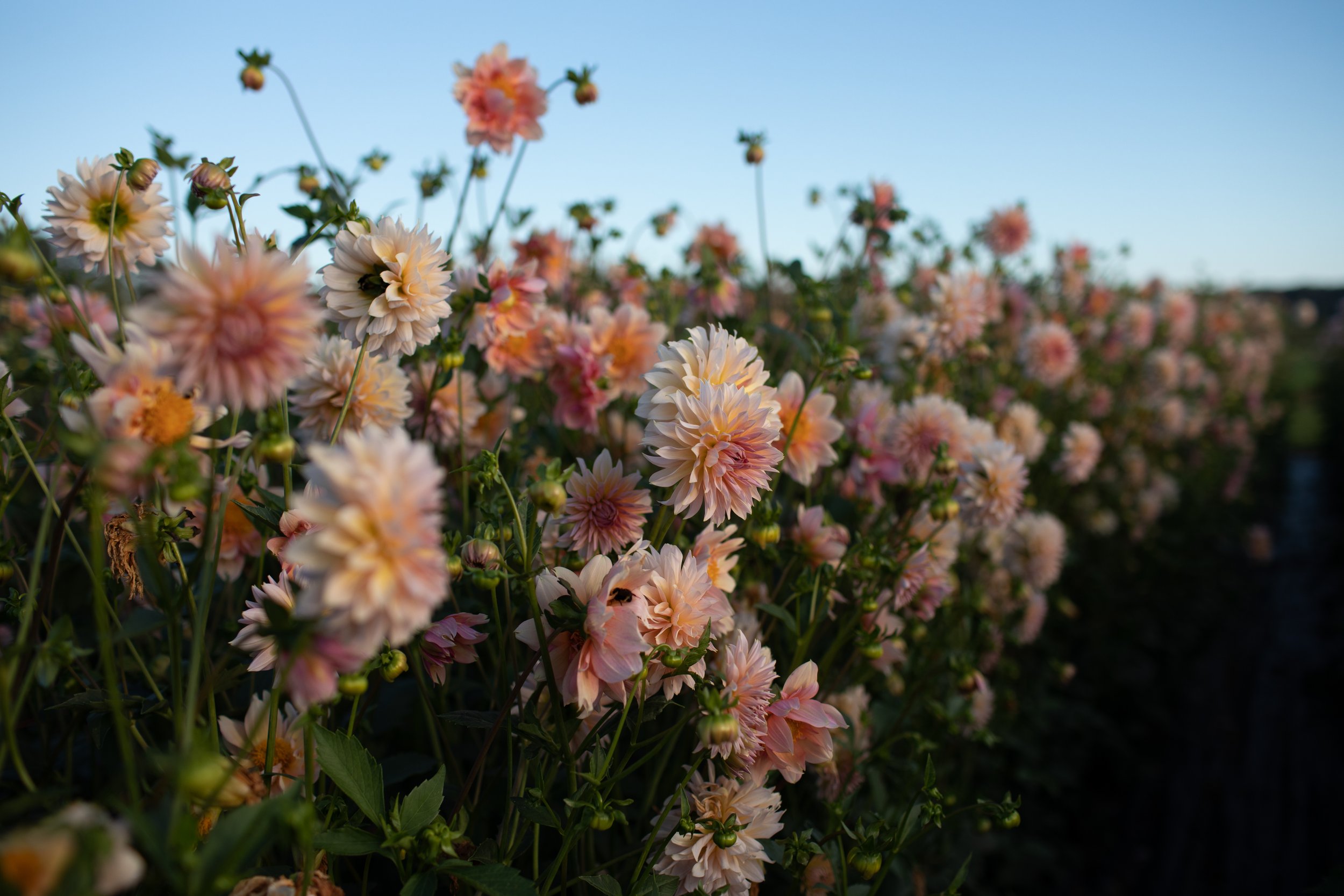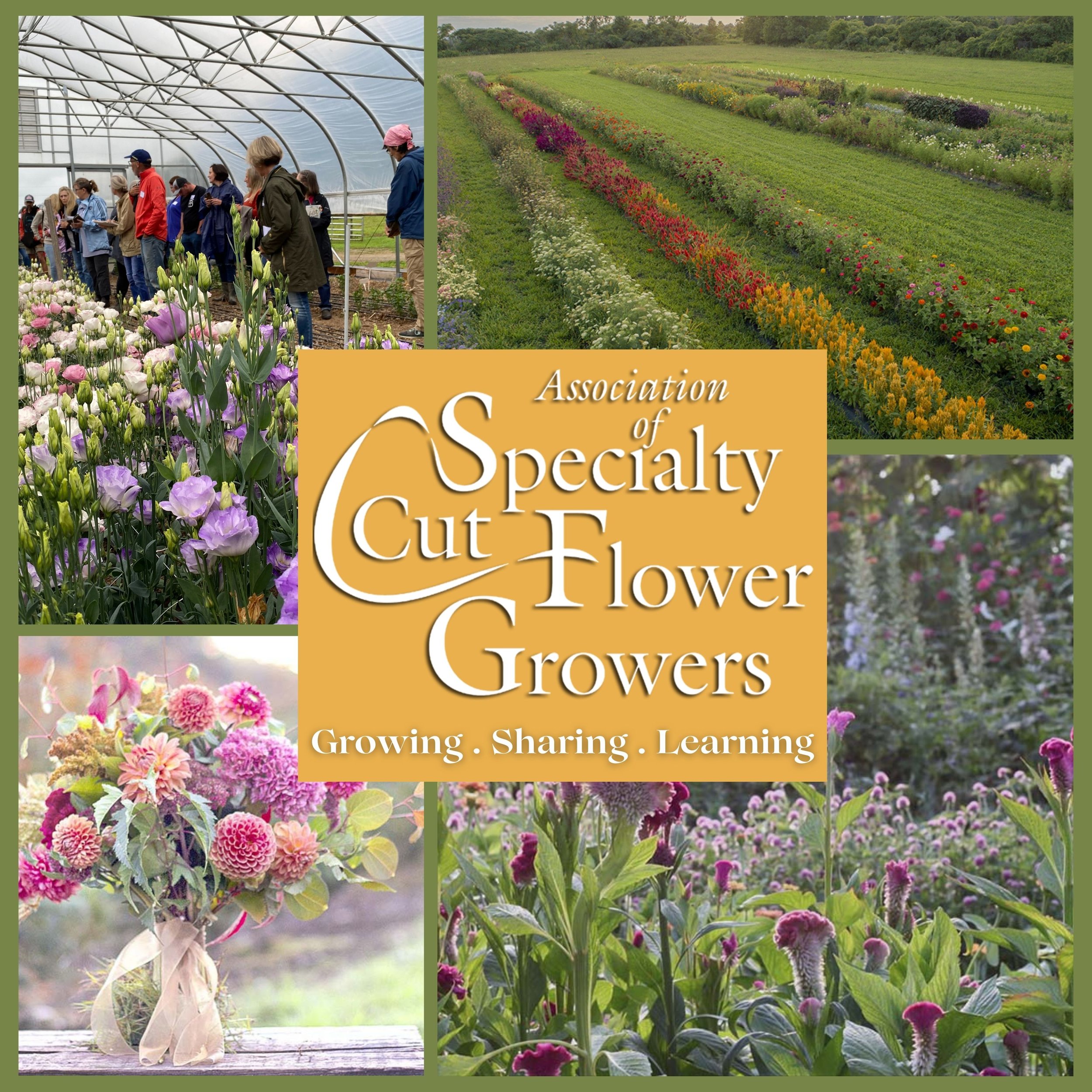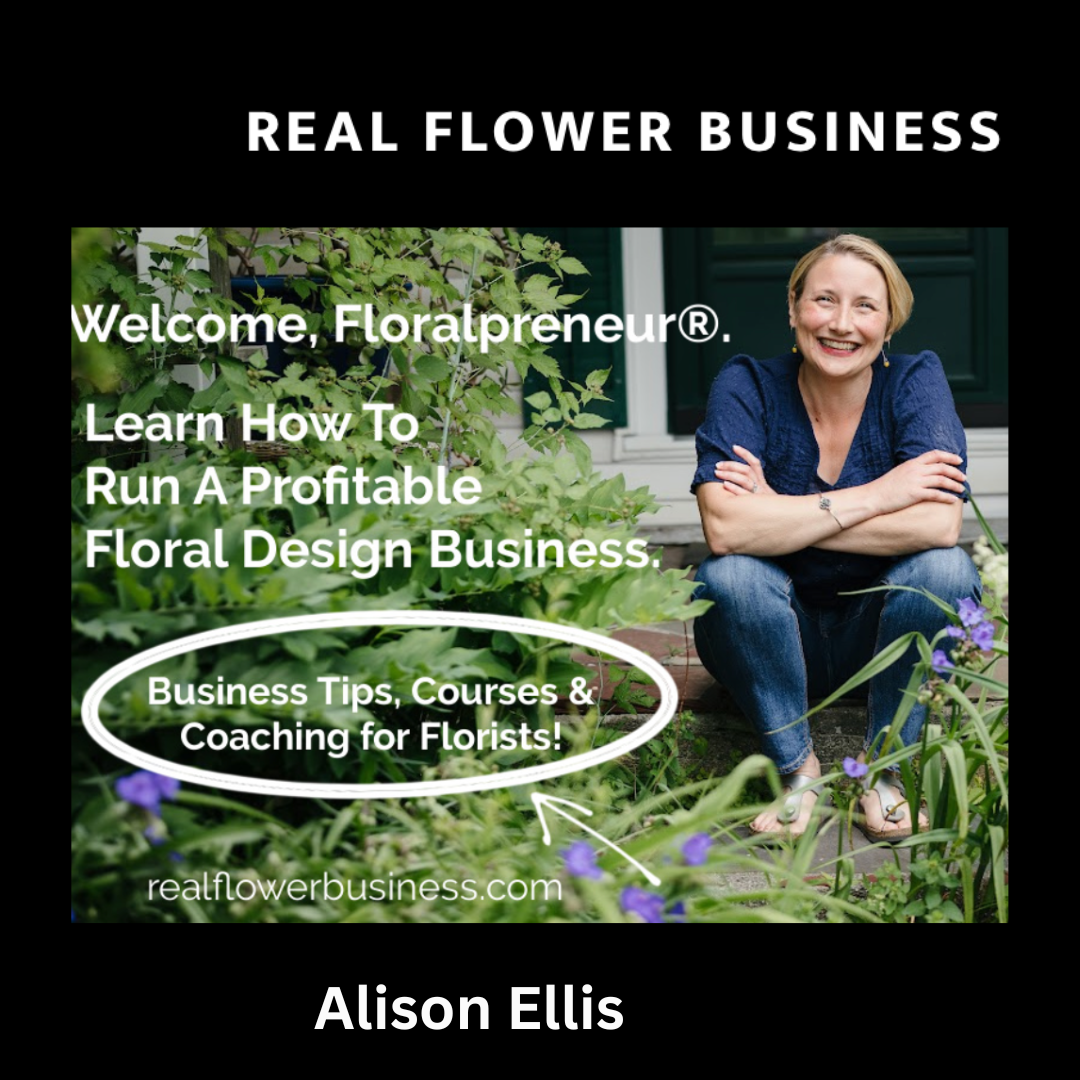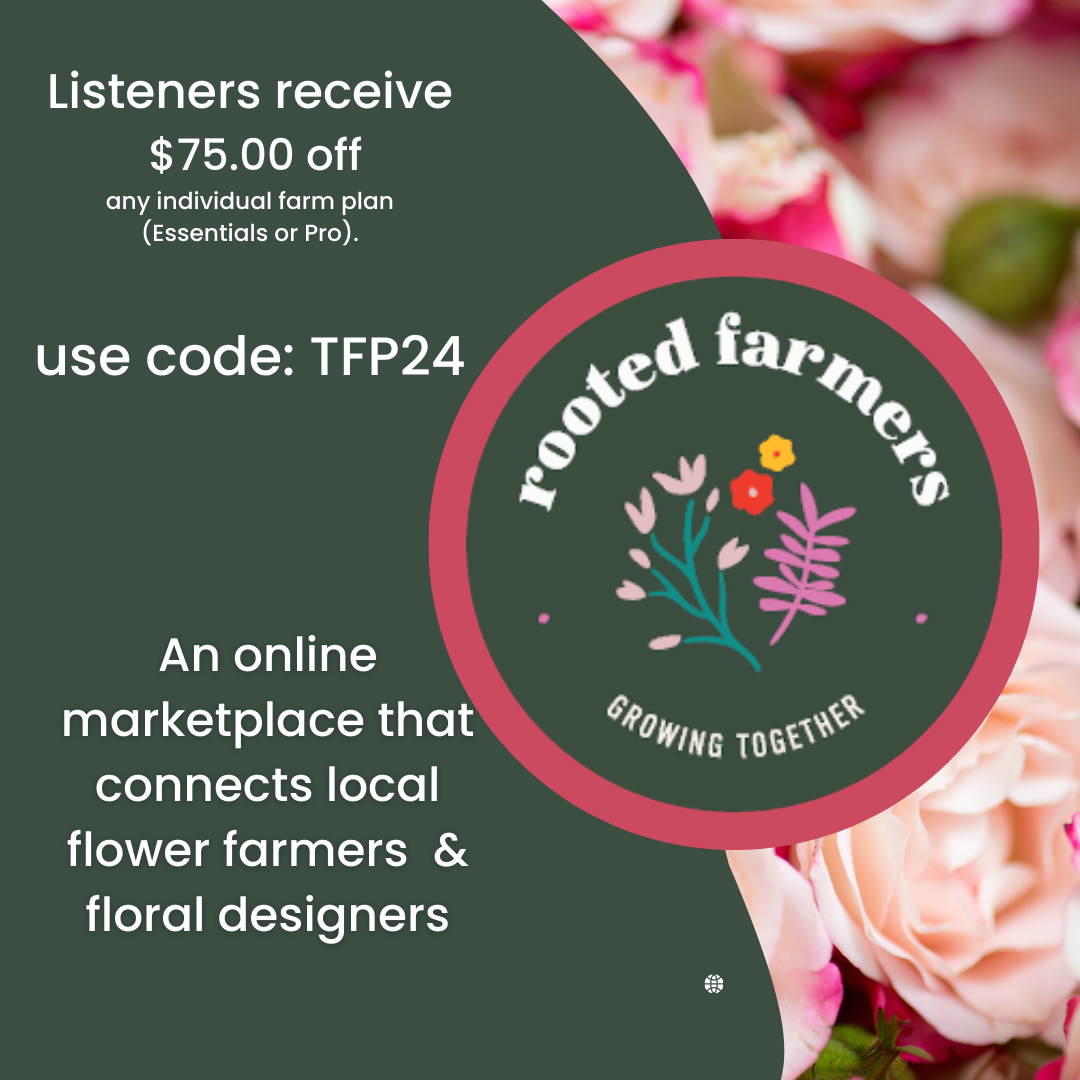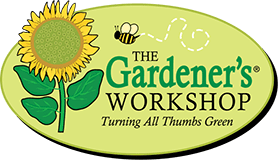Erin and Chris Benzakein moved from Seattle, Washington to the Skagit Valley in order to pursue a slower, simpler life and raise their children surrounded by nature. Soon after buying a small house in the country, they tilled up their plot in order to create a huge garden. Tucked in with all the vegetables was a double row of flowering sweet peas planted in memory of Erin’s great-grandmother. After sharing some of the blooms with friends and neighbors, word got out and Erin started receiving orders. The following year Erin replaced all of the vegetables in her garden with flowers. Floret expanded year after year, eventually filling every corner of the tiny 2-acre plot with flowers destined for grocery stores, florists, bouquet subscriptions, and weddings. Floret later expanded into specialty flower seed and now offers a collection of farm-bred varieties, along with tools and gardening supplies through the Floret Shop. From 2014 to 2018, Floret hosted more than 25 on-farm workshops focused on seasonal flower production and natural floral design. These wildly popular events brought together flower lovers from across the U.S. and from as far away as Australia, England, and Brazil. Unable to scale these in-person trainings to meet demand, Floret converted the workshop content into a 6-week video-based course all about growing flowers on a small scale. The Floret Online Workshop is offered each fall and has trained thousands of flower growers from nearly 50 countries how to grow flowers on a small scale.
Floret also offers free resources to help others have success growing flowers. The Floret Libraryis the culmination of nearly 10 years of behind-the-scenes work, including trialing, photographing, documenting, cataloging, and classifying thousands of different flower varieties. This comprehensive, digital library is available to anyone, anywhere in the world to use for free and includes detailed profiles of more than 1,500 unique cut flower varieties that have all been grown and tested here on our farm. Users can search the library in a number of different ways and print variety profiles and planning cards to help them design their gardens.
Show Notes
Image by Chris Benzakein
I appreciate Erin’s approach to learning by diving into everything she could get her hands on to learn about design and color.
If you follow or know of floral designers that create beautiful work you especially like, study their content or take a workshop or class with them to develop your own skills.
If you’re new to gardening or growing flowers, trial several different varieties of flowers and gradually learn the ropes. Learning by trial and error deepens our skills and serves us better in our passion for growing. See what grows well in your area.
Daffodil and narcissus tips: When cutting, let the flowers rest in a bucket of water by themselves for 3-4 hours so their sap can drain before mixing them with other flowers. Try not to cut them again once you take them out of the water if you can help it.
Euphorbia Tip: Dip the ends of the flowers in boiling water for 7-10 seconds to seal the sap in the stems.
Poppy Tip: Hold the cut poppy over an open flame or boiling water. The searing of the stems will help them last longer.
Cut Pansies: If you plant them close together and don’t pick them, the stems will self-clean and grow longer providing you with longer stem length.
If you’ve never grown flowers or produced cut flowers for yourself, I hope you’ve been inspired to start and get your hands in the dirt and share the beauty of flowers with someone.
